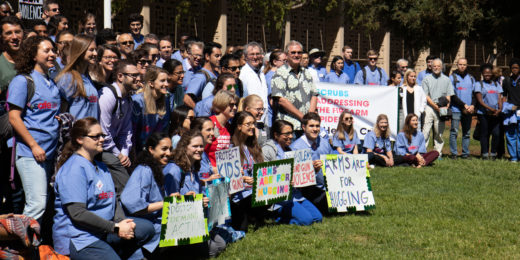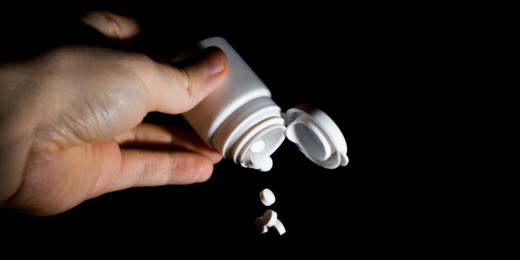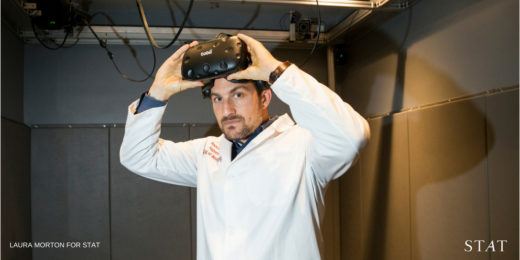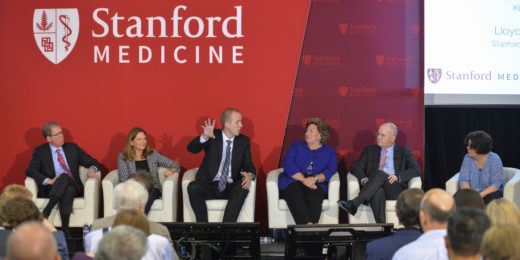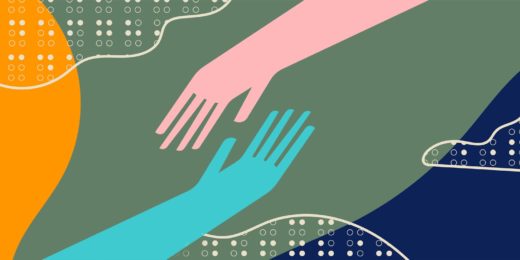More than 300 doctors, residents and medical students gathered on the Stanford Medicine campus to support reducing firearms violence in the United States.
Author: Amy Jeter Hansen
A roadmap for the future of electronic health records
A new white paper from Stanford Medicine details obstacles and offers solutions for achieving the full potential of electronic health records.
Connection between climate change and health will be a focus of summit
As the Global Climate Action Summit convenes in San Francisco, Stanford leaders discuss links between climate change and health.
Instincts vs. facts: How one physician learned to listen to intuition
In an essay for The New England Journal of Medicine, a Stanford resident writes about trusting intuition when a patient needs more than medical facts.
Doctor’s reassurance can make patients feel better, study finds
A new study by Stanford researchers finds patients' allergic reactions dissipated more quickly when they were offered assurance by a doctor.
Understanding and predicting deception in clinical trials
A new Stanford-led study catalogs the prevalence and types of deception by volunteers in clinical trials and suggests ways for investigators to root it out.
Stanford surgeon works to improve care for civilians in conflict zones
The goal is to design a humanitarian surgical response in conflict zones to avert preventable disability and deaths through modern, evidence-based care.
Discussing care goals with a nonclinical worker brings higher patient satisfaction, lower costs, study finds
Stanford's Manali Patel found higher satisfaction and lower costs for advanced cancer patients who spoke with a nonclinical worker about care preferences.
From AI to clinical informatics, Big Data conference videos offer deeper dive
Video interviews from Stanford's Big Data in Precision Health conference explore topics from artificial intelligence in radiology to clinical informatics.
Thai boys’ cave rescue: What are the health concerns?
Paul Auerbach, a Stanford professor of emergency medicine, discusses potential health concerns of Thai boys rescued after two weeks trapped in a cave.
Stanford “risk-taker” uses virtual reality to study glaucoma treatment, fear
Stanford neuroscientist Andrew Huberman is studying the effectiveness of virtual reality as a tool for preserving sight for glaucoma patients.
Disrupt Diabetes draws patients into innovation process
A design challenge called Disrupt Diabetes was created and spearheaded by two Stanford seniors — best friends and aspiring doctors who felt that innovations for people with diabetes should bubble up from patients’ daily experiences and priorities.
Realizing the clinical potential of electronic health records
Stanford Medicine's Electronic Health Records National Symposium touched on improving inefficiencies of EHRs, harnessing data for population health management, building on successes and overcoming obstacles.
Fluctuations of Affordable Care Act enrollees jeopardize market stability
A working paper from Stanford scholars finds evidence that some consumers who buy their own insurance have taken advantage of the ACA provision preventing discrimination based on preexisting conditions to strategically pop in and out of coverage in ACA marketplaces.
Poll: Doctors say electronic health records need overhaul
A majority of primary care doctors report frustration with how electronic health records have affected their relationships with patients and with the amount of time required by the systems, according to a Stanford poll commissioned from The Harris Poll. However, many also say EHRs have led to improved patient care.
Artificial skin technology mimics touch sensations and reflexes
Researchers from Stanford and Seoul National University have constructed an artificial sensory nerve circuit that imitates human reflexes and ability to sense touch.


